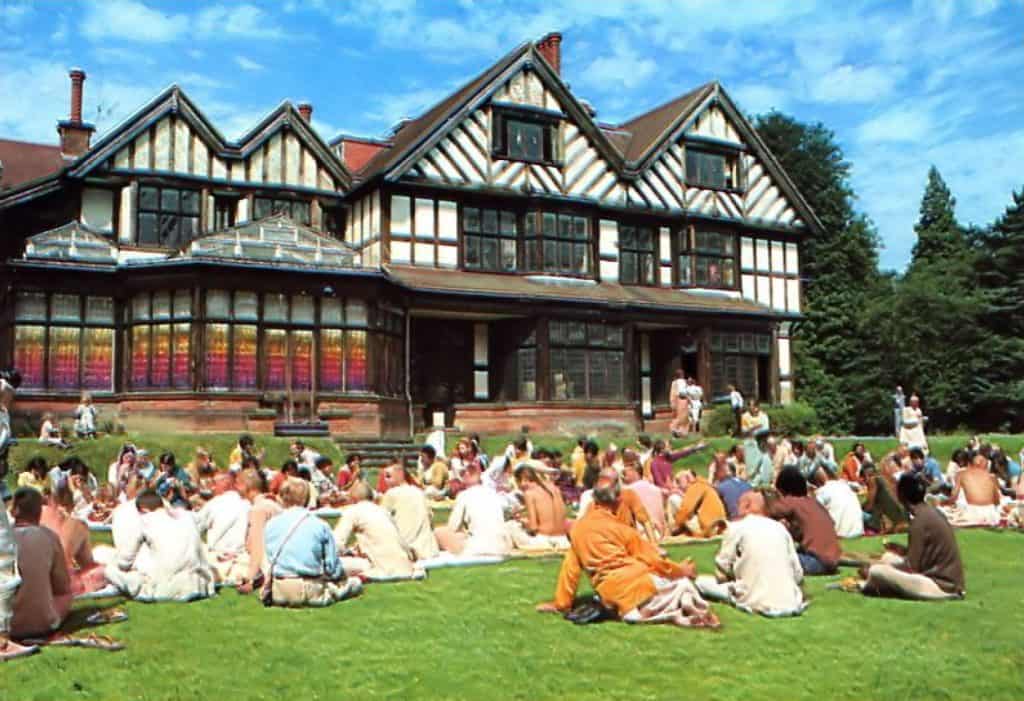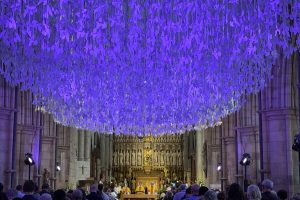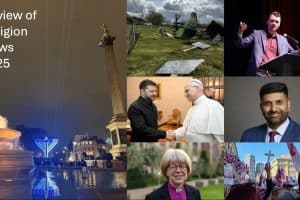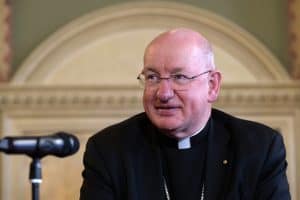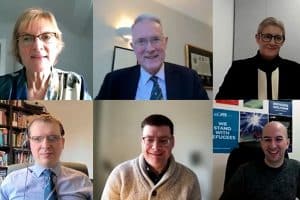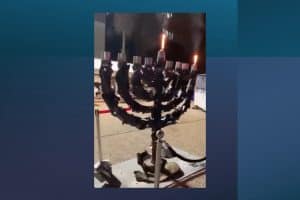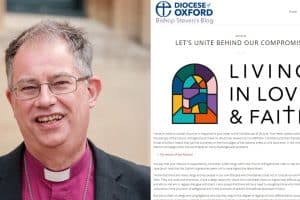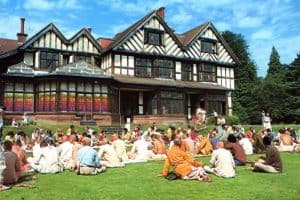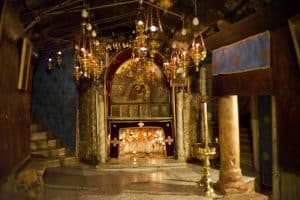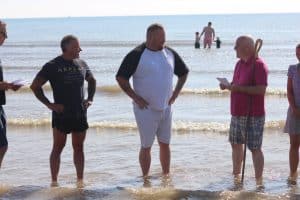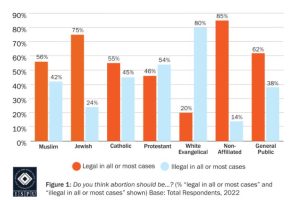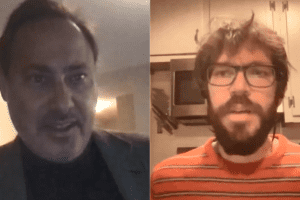By Naomi Canton
An evening of music and readings to celebrate the life of the Beatle George Harrison will be held today, Friday 29 November, the 23rd anniversary of his death, at the Hertfordshire manor house he bought for the Hare Krishna movement.
Harrison acquired the mock-Tudor Bhaktivedanta Manor, near Letchmore Heath, then known as Piggott’s Manor, and its 17-acre estate in 1973, and donated it to the International Society for Krishna Consciousness (Iskcon). It was an additional much needed space. as the society’s central London temple in Bury Place, Bloomsbury, was overflowing with devotees, many of them sleeping on the stairs.
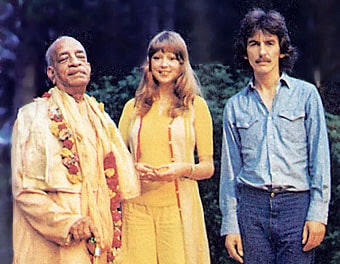
Iskcon renamed the manor in honour of A. C. Bhaktivedanta Swami Prabhupada, who founded the society in 1966. Bhaktivedanta is a Sanskrit word meaning “the conclusion or summary of all spiritual knowledge”.
The Beatles had developed a love for Indian spirituality and for Krishna consciousness during a trip to Rishikesh, India, in 1967. This coincided with an explosion of interest in the Hare Krishna movement in the West.
In 1969, Harrison and Hare Krishna devotees released a single, Hare Krishna Mantra on the Beatles’ Apple label, which reached No12 in the charts. After the Beatles split, Harrison released My Sweet Lord, written in praise of Lord Krishna, an important Hindu deity. It topped the charts worldwide.
Over the years that followed, Harrison kept in close contact with the leaders of the movement in England, disciples of Srila Prabhupada and lent them his support. (Srila means beautiful and is used as a respectful honorific.)
The manor was one of the last places that Srila Prabhupada visited before his death in Vrindavan, India, in 1977. Harrison continued visiting throughout his life.
There are now 12 Iskcon temples in the UK. Most of the UK’s million-plus Hindus worship Krishna, among other Hindu deities. Krishna is considered by Hindus to be the all-pervading spiritual energy that includes everything and everyone and the one responsible for the creation, maintenance and annihilation of everything in the material world.
Iskcon aims to distribute the teachings of Krishna and the Hare Krishna mantra all over the world. The belief is that anyone can know Krishna through Krishna consciousness, or bhakti yoga where loving, devotional service is offered to God. The manor is now the de facto headquarters of Iskcon in UK.
In 1973 on Janmashtami, a festival on 21 August to celebrate the birth of Lord Krishna, Srila Prabhupada installed two deities at the manor, Radha and Krishna, which had been sent from India.
Ever since, on that day, the manor opens to the public for the Janmashtami festival. And this summer, I experienced its colour and exuberance for the first time.
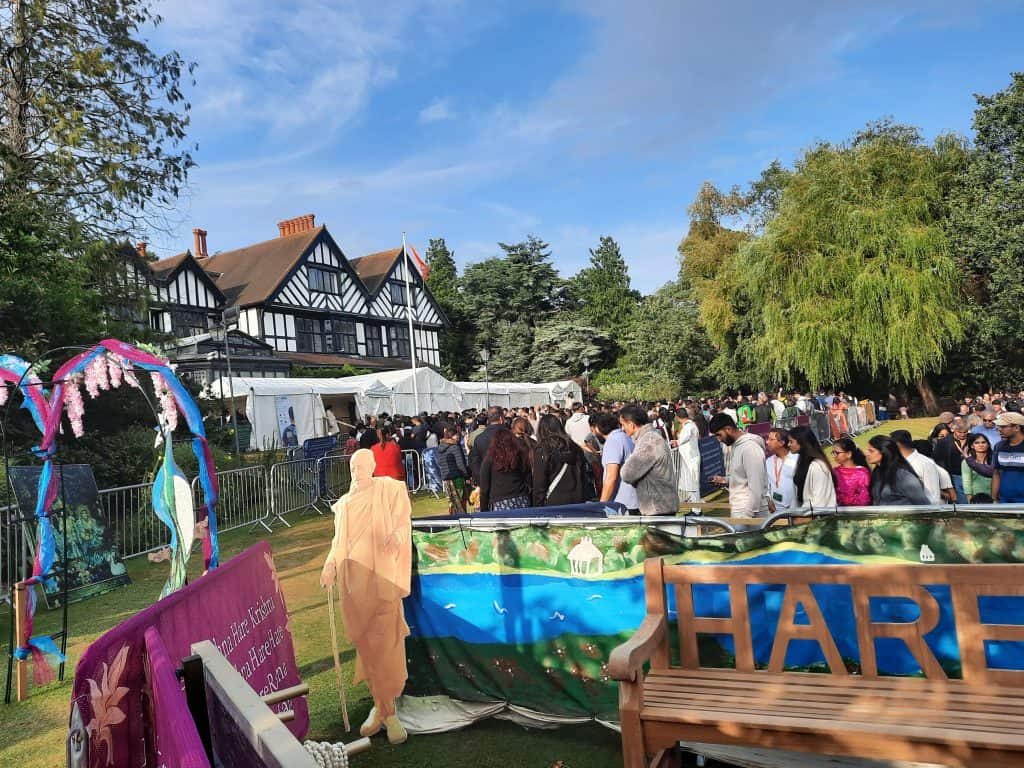
I didn’t know what to expect. I told the organisers my cousin was giving me a lift, and they said invite her too. I was staying at my uncle’s house. They told me to invite him as well, so I brought them all with me even though their only knowledge of the Hare Krishna movement was a few devotees walking through Oxford Street banging drums and chanting.
As we arrived, it felt like going to the Glastonbury festival. There were fields and fields of cars parked and Krishna volunteers in yellow visors directing cars down the bumpy farm track that seemed to go on for ever. We passed groups of devotees farming on the estate, which now comprises 78 acres and is cultivated as naturally as possible, without pesticides or herbicides. There were tents and marquees everywhere: food stalls, clothes stalls, plays being performed and music being played.
The Indian diaspora were arriving in their thousands by mid-afternoon. I later found out that more than 60,000 attended, the largest celebration of Krishna’s birthday outside India.
I had a tilak, made of sacred clay, put on my forehead as I walked in. Devotees wear this to mark their bodies as an instrument of service to Lord Krishna. We passed the famous Iskcon holy cows and went straight to a VIP and media reception area for a welcome chai and a delicious strawberry cold drink.
Immediately we were greeted by devotees, who were all hospitable and eager to tell us all about the festival and the temple. We toured the wooded area and a quiet garden created in George Harrison’s memory, and then went inside the manor to view Srila Prabhupada’s private rooms, which are as he left them: his books were still on their shelves and a letter that he was signing remains on his desk. The bed linen is changed every day and fresh water put at the bedside.
From the “special atmosphere” of the room, as the guide put it, we queued, shoeless for a glimpse of the “deities” installed at the manor. People were singing Hare Krishna and the atmosphere was electric.
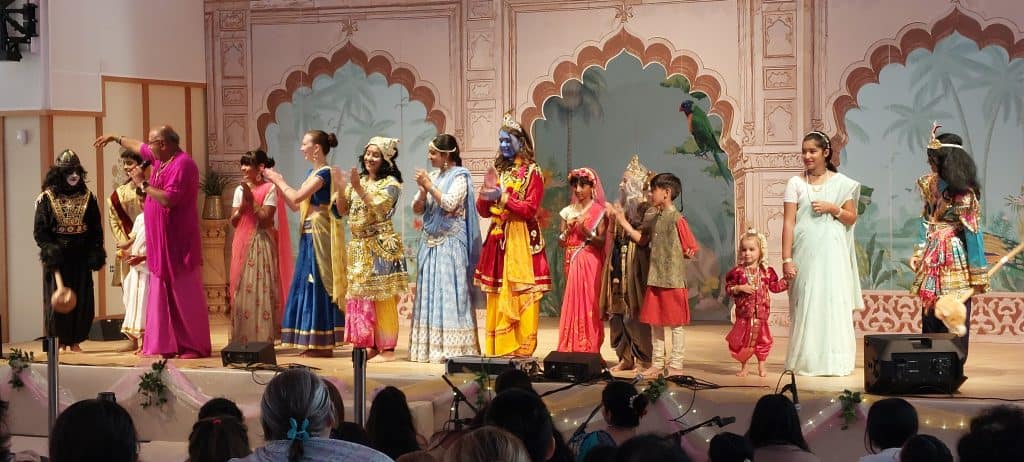
Next we went inside a marquee for an Indian play based on an ancient epic about devotion to Krishna. In the next tent, labelled “Ask me anything” — yes, any question about life or death — I asked what happened to cats when they died. They are reincarnated, I was told.
From cats to cattle. Next on the agenda was feeding the cows. The excitement! Thirty-four cows, 24 oxen and one bull live on the estate. They produce milk according to ahimsa (non-injury and non-killing) which is used in the prasadam (sanctified food). A bunch of grass to feed them in their goshala (shelter) cost £2. I paid up. They looked very healthy.
Separate to that you could pay £35 for gau puja —a cow worship ceremony that is believed to bring divine blessings. That attracted big queues. In Hindu culture, the cow is seen as an animal manifestation of mother earth. A Hindu priest walked round a cow painted with Devanagari script chanting prayers while devotees followed in a circle three times. It was at this point that the beast emptied her bladder!
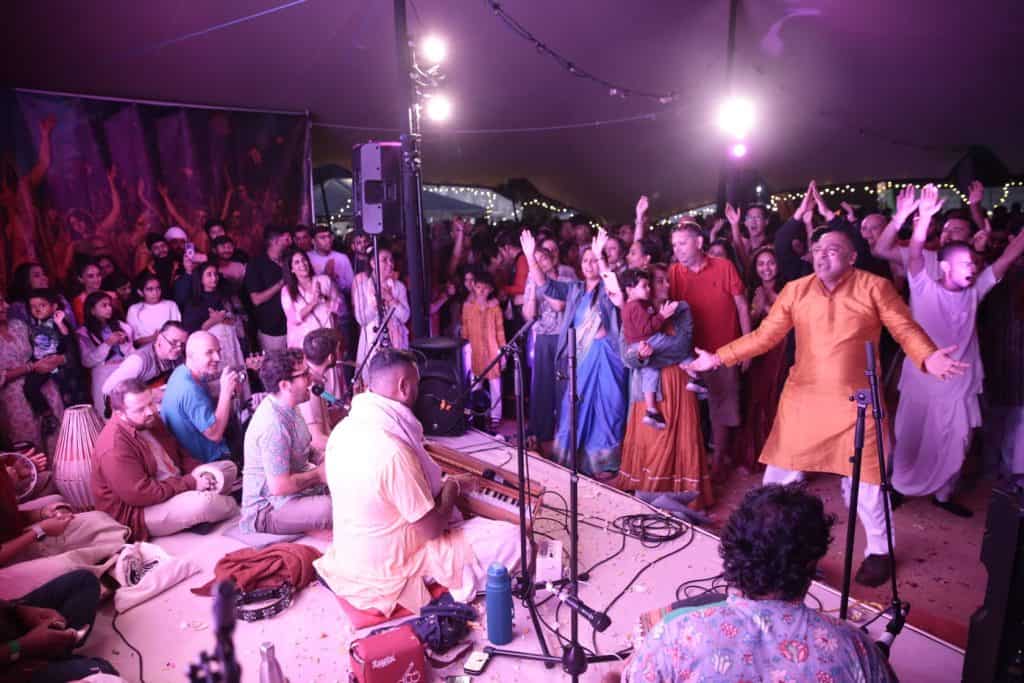
In the next marquee a band were singing Hare Krishna chants and the congregation sat on the floor joining in. All around, devotees glowed with kindness and humility, checking if you needed help: all we so calm and never seemed to get agitated or stressed — despite the huge crowds and the heat!
My uncle was talking about medicine he was taking and the guide showed an interest. He later revealed he was a pharmacist and he was volunteering — this was his seva (selfless service) which is said to bring devotees closer to Krishna.
The devotees certainly had something about them: they emanated love, peace and total devotion to others.
Naomi Canton is a freelance journalist who writes on UK-India affairs

